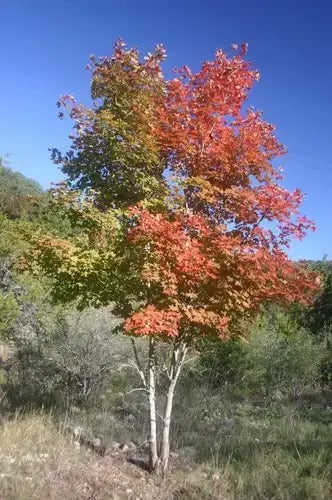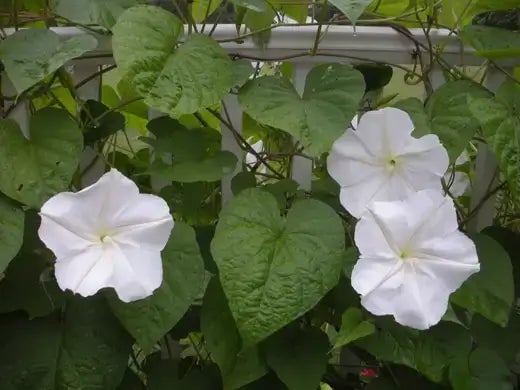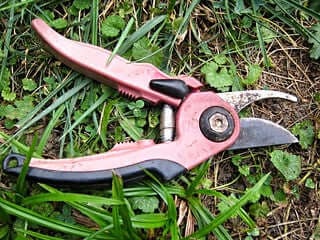We associate fall with cooler temperatures; beautiful colors paint our landscapes and those of Mother Nature. In some areas of our wonderful country, it is breathtaking, and soaking in its beauty gives a warm fuzzy, and happy feeling as winter approaches in our gardens.
Then reality flings its arrows into our being, and we slowly begin performing the necessary tasks to yield that wonderful fall palette of colors. Its' time to dig out the sharpening stone, three in1 oil can, some rags, pair of safety goggles, and prepare pruning cutters and shears for an entire season of work.
Fall Pruning is Crucial for a Healthy Spring Landscape Design
Usually, pruning is not required on newly planted trees. However, as the tree grows, one should cut off the lower branches to provide clearance above ground, to remove dead or damaged limbs or the infamous suckers that sprout from the trunk. Often more giant trees require pruning to permit more light to enter through the canopy.
Pruners will easily remove smaller branches; however, You should remove larger branches with a pruning saw. Some school of thought states that all cuts should be vertical; however, if this is not feasible, a cut at an approximate 45-degree angle will do very nicely. Both cuts achieve the same desired results; lessen water retention to minimize rot.
Avoiding Pruning Pitfalls in Fall Gardening
You must note that if the cut is greater than the thickness of an individual's thumb, a sealant is recommended. Major pruning should only be done in late winter or very early spring. At that time, the tree is more likely to 'bleed' as the sap is rising through the plant, which is healthy and will help prevent invasion by many disease organisms. Heavy pruning in late summer or fall may reduce the tree's stamina against winter harshness.
Remember, the removal of heavy branches is very hazardous. If in doubt, contact the folks at our great online nursery to advise and recommend professional help.
Before I leave the subject of tree pruning, under no circumstances should trees be topped. That ruins the tree's natural shape and drastically increases its susceptibility to diseases, and results in very narrow crotch angles, the angle between the trunk and the side branch. Narrow crotch angles are weak and will easily break under the right conditions. If a large tree requires a significant reduction in height or size, contact a professional.
Next time you drive through the countryside and see a line of trees bordering a farmer's field, ask yourself why. Why are the trees there? These trees are windbreakers that slow the wind and provide shelter and food for wildlife. Windbreaks can be beneficial in reducing blowing and drifting snow along highways. A bonus, they help prevent bust particles from adding to smog over urban areas. They have a purpose.
Using Fall Leaves Productively
As fall sets in, the colorful leaves cover the ground but are commonly perceived as yard waste. These leaves transform into a remarkable resource through creative and sustainable repurposing methods. Utilizing fall leaves to their full potential enables you to improve soil quality while creating artistic works and helping local natural habitats thrive. These tips demonstrate how you can use fall leaves in productive ways.
Transform fallen leaves into compost instead of disposing them in the landfill. Mix fallen leaves with green substances, including grass clippings or kitchen scraps. The combination of leaves and green materials decomposes into a nutrient-rich compost that feeds vegetable gardens, flower beds, and potted plants. The practice reduces waste while saving money on chemical fertilizers and improving soil health.
Another practical approach involves creating leaf mold. Leaf mold differs from compost since its decomposition process requires fungal action, which extends over a period longer than a year. Collect leaves in a wire bin or pile and allow them to break down through decomposition. Leaf mold emerges as a dark, crumbly material that boosts soil aeration and maintains moisture while improving fertility. You can enhance soil quality at no extra charge by mixing leaf mold into your garden beds or applying it as mulch.
Another excellent approach to garden management involves shredding leaves to use as mulch. A leaf shredder or lawnmower speeds up the decomposition process of leaves. Spread shredded leaves around shrubs and perennials to retain moisture and keep weeds under control, all while providing a slow nutrient release during decomposition. The protective layer functions to stabilize root temperatures, protecting plants throughout the winter season.
Fall leaves can also fuel creativity. Set aside your most unique leaves to press and preserve them for future use. You receive charming decorative touches when you use pressed leaves, bookmarks, greeting cards, and collages. Another option is leaf stamping: Submerge leaves in paint to create patterns on paper or fabric by pressing them down. Creating arts-and-crafts projects allows children and adults to participate together, transforming the season into a more celebratory time.
Wildlife habitats develop from designated areas where leaves naturally collect. Decaying leaves provide warmth and protection to various insects and small animals looking for shelter during winter. The technique benefits local species diversity while supporting healthy ecosystem development. Should you find a big leaf pile inappropriate for your yard, you might want to use small hidden spots that provide safe hiding places for small wildlife.
People who maintain gardens or homes and need additional leaves for their compost piles or mulch applications would value receiving leaf donations. Sharing leaves helps communities reduce waste while ensuring that organic material serves a useful purpose. Working together as a community strengthens local connections and supports environmental care.
People who dislike how fallen leaves look should recognize that their advantages surpass the short-term mess they create. Regular leaf raking or mulching maintains tidy outdoor areas and effectively utilizes leaves’ beneficial properties. Each week that goes by transforms seasonal work into an enduring, sustainable routine.
Ultimately, autumn leaves are not mere debris. Nature presents us with leaves that regenerate endlessly and come without cost. You can turn leaves into a valuable asset through diverse applications, including compost, leaf mold production, mulching, and crafting. Through these practices, you can develop thriving gardens while inspiring creative projects and supporting wildlife in your area.
Read more

Mountain Maple The mountain maple, or Acer spicatum, is a maple native to northeastern North America, though You can find it growing in the highlands as far south as Georgia. The mountain maple is ...

Do you have fireflies where you live? They create a beautiful light display at night due to a chemical reaction in their bodies. If you enjoy the evening outdoors, do some nighttime gardening.


